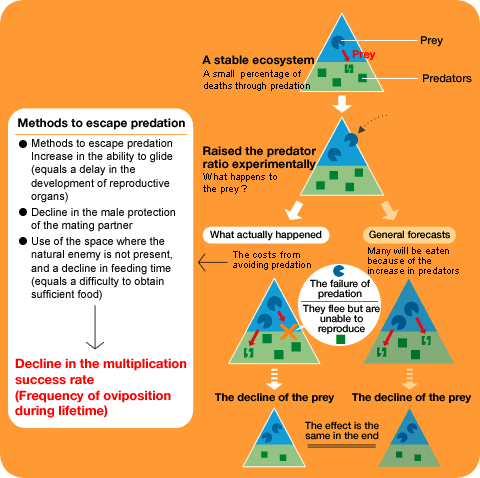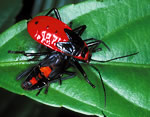In a Southeast Asian botanical garden, I found a one-to-one predator-prey relationship established in an independent environment. The stinkbug eats the fruit of the Hydnocarpus anthelmintica Pierre, a fruit tree used in Chinese herbal medicine, and the predator stinkbug eats only that stinkbug. In ordinary conditions, very few stinkbugs become prey, and their deaths through predation amount to only a few percentage points of the population. This is in accordance with the conventional wisdom of ecology.
We then raised the ratio of the predators and observed the result. This developed the activity of evasion by the prey, and there was almost no change in the death rate. The success rate for reproduction fell by half. A decline in the number born has the same meaning for the ecology as the death of most of the prey. This indeed was the effect of a natural enemy.
|

